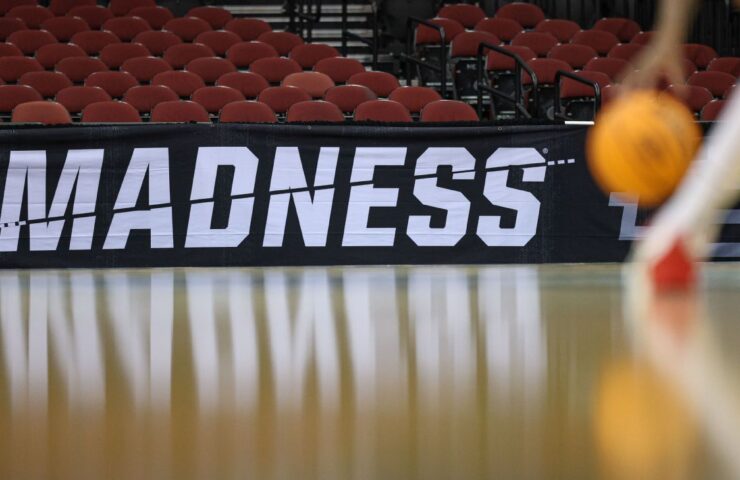
What the NCAA competition could look like with growth
-
Joe LunardiJul 9, 2025, 03:00 PM ET Close Local college basketball bracketologist for ESPN
- Contributor to SportsCenter, ESPN Insider
- Released very first public bracket in 1995
In spite of plenty of hand-wringing from college basketball purists, broadening the NCAA tournament isn’t the awful idea many have suggested. In reality, yours truly has preferred modest growth for rather some time, specifically and essentially if it keeps high majors from going their own way.There hasn’t been major expansion for 40 years (when the competition jumped from 32 to 64), and Division I basketball has grown substantially in that time. With everyone hunting for even more profits, both internal and external pressures are pushing the highest majors toward something no one wants: separate tournaments of haves and have-nots. Instead, the NCAA looks likely to approve an expansion to 72 or 76 groups, possibly as soon as this week. The NCAA is loath to adjust its 64-team bracket and carefully-thought-out calendar, which means approximately 2 dozen groups could be fighting in earlier rounds as soon as next season. So let’s look at the useful ramifications of a bigger field– mostly for the new bracket– along with what the unexpected consequences might be.Because there are constantly unintentional repercussions. Reflect to the introduction of the First Four to the guys’s competition in
2011(the females’s competition would incorporate it in 2022). We wrote then that the very first 16 vs. 1 upset was”essentially guaranteed by the new format,”as including a pair of what previously were 15-seeds to the broadened No. 16 line would “stiffen the competitors “for the 1-seeds.”The 15s had actually currently shown they might beat 2-seeds,”we wrote, and in the 14 years considering that, UMBC and Fairleigh Dickinson have actually shown us right.We can’t be quite as clairvoyant with this latest expansion, as there are still more questions than answers in regards to bracket composition
, where(and for whom )the essential byes will fall and, perhaps most seriously, changes to the tournament’s timing and location. Let’s deal with each of those questions. Who could get the additional bids?Perhaps the most significant concern is
the simplest: Who else
will go dancing? Let’s presume there are no changes to the number of automatic qualifiers(AQs) or the fundamentals of team choice and seeding.If we were to look at in 2015’s 68-team field and our Selection Sunday”bubble,”expanding to 72 would have instantly added West Virginia, Indiana, Boise State and Ohio State. Our next 4 out, if required to reach 76 groups, were Dayton Flyers, Wake Forest Devil Deacons, UC Irvine Anteaters and SMU Mustangs.Editor’s Picks< img src="https://a.espncdn.com/combiner/i?img=/photo/2025/0320/r1466793_2_1296x1296_1-1.jpg&w=130&h=130&scale=crop&location=center "width="65
” height=”65″/ >
1 Related It’s a one-time sample, but still reassuring to see 3 of the 8 reward quotes come from outside the conventional power conferences. It says here that is a really preferable result. Quality mid-majors have been getting the squeeze for years, so new opportunities at that level of the game are welcome.Going back to the pandemic and looking at the highest-ranked(by internet )unselected groups includes even more viewpoint. This 40-team sample of possible additions in an expanded tournament breaks down as follows: From my seat, this is still too lopsided. But it’s a start.How will the bracket be built?This is the hardest question to respond to.
Currently, 60 of 68 groups receive what amounts to a”bye” into the primary bracket of 64. With a 76-team field, just 52 would get such a bye.Some would argue for the bottom 24 AQs to play their method into the ultimate field of 64
. More would argue for only at-large selections, in this case 24 out of 45 non-AQs, to do so. The most likely result, based on the tournament’s history, is another compromise. And the best course to that without making a total mess of the bracket is to designate 3 complete seed lines as opening-round pairings.For the sake of argument, let’s utilize seed lines 10, 11 and 12– which have, generally, seen themselves in the First Four. These are usually a mix of more powerful AQs and the final at-large teams. Doubling the number of quotes on each of those lines gets us to 76 groups. Put them in Tuesday-Wednesday tripleheaders and we ‘d have a truly appealing television item (better than, say, Alabama State vs. St. Francis( PA)). Using the 2025 competition as an example, adding the next eight bubble teams (indicated
by an asterisk below)to the bracket would have produced something like this for an opening round: The last tally here is 4 AQs, 4 pre-expansion at-larges and the 8 new at-larges (groups 69-76). There’s likewise a near-even split in between power conferences and not.Realistically, which seeds might the brand-new teams get?The First Four was quite deliberate in designating the bottom four groups from both the AQ group
and the at-large pool. The resulting Dayton doubleheaders have actually
hence featured a pair of 16 vs. 16 matches along with, normally, 11 vs. 11 seeds. The First Four also “divide the infant,”if you will, in terms of relegating an equivalent variety of low majors and greater majors to the opening round.With growth, particularly if to 76, that neat compromise goes out the window. Instead of 8 groups playing 4 opening-round games, a 76-team bracket requires 24 groups
— a huge increase– playing 12 opening-round games. In other words, practically a third of the field will need to squeeze in an additional contest soon after Choice Sunday to keep the existing competition calendar intact.The cleanest indicates to that end is to play Tuesday and Wednesday tripleheaders. It will not be a simple turnaround for the Tuesday teams, however only half of the 24 opening-round individuals will remain in that situation.
(The variety of groups and games needed for a 72-team field drops to 16 and 8, respectively, with 8 games on Tuesday and Wednesday over two sites.)When could these teams play?The just thing the NCAA wants more than a best 64-team bracket after the opening round is a tournament that doesn’t need a change in its calendar. The males’s championship has a best cadence on CBS/Turner, coordinating the Final 4 a week before the Masters and support Choice Sunday into that window.Conceivably, a broadened opening round might be returned a day or more– as it was for the 2021 COVID tourney– and extend the round of 32 into Monday or Tuesday of the following week. However that would interfere with the standard Thursday and Friday of the first round, probably the most popular element of the existing format.The only alter I foresee in the long run is the removal of all conference championship games on Selection Sunday, leading to a Selection Show that airs earlier in the day. This would provide additional travel and prep time to the 24 opening-round participants.Where might the brand-new groups play?Dayton has its First 4 hosting opportunities through
the 2028 competition. One option is to move the staying extra games to a preexisting first/second-round website. Most likely, in order to create a genuine tournament atmosphere along with required bracket flexibility, the service is to identify a buddy opening-round site and replicate the Dayton design outside the Eastern time zone.Geography ought to be the main consideration here. Until we create a configuration that keeps the one dozen opening-round winners from instantly needing to head for the airport, that take a trip need to be minimized.I would choose the non-Dayton website based on the sub-regional places in each year’s tournament. This coming season, not that anyone asked, my vote would be for Kansas City.Looking at the overall item, I do not love the troublesome opening round needed by 76 (or perhaps 72 )groups. I still believe the very best competition would include the original 64-team field with some sort of minimum eligibility requirement for middling high majors. But, at this point, elements beyond basketball are pointing towards expansion being inevitable.Are these best services? No.But a fractured sport without the NCAA tournament as we know it would be far worse.
